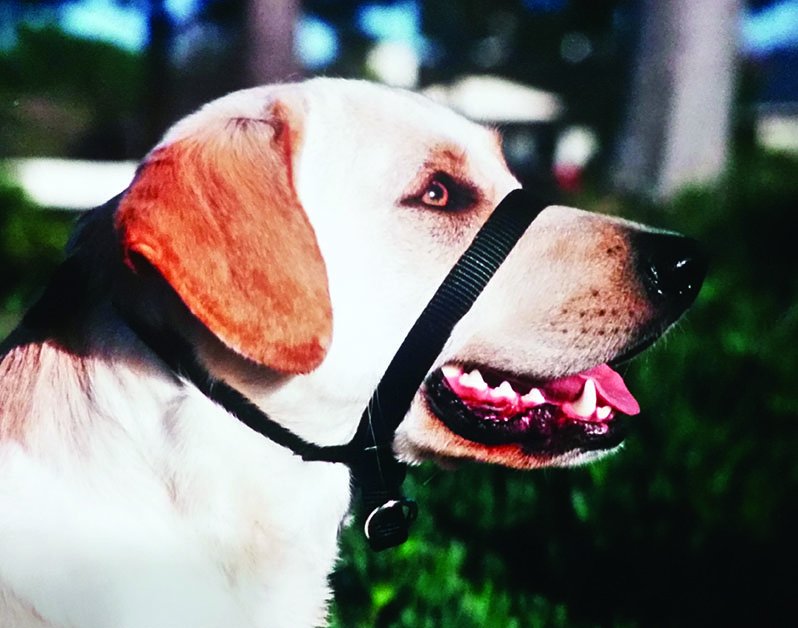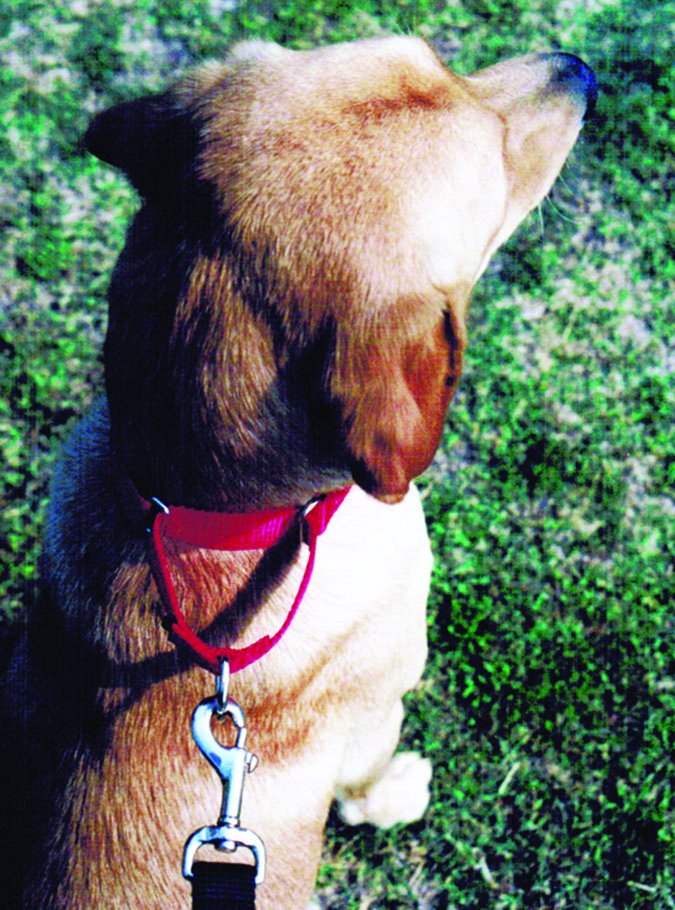[Updated January 31, 2019]
“Does this collar make me look fat?” This is not a question your dog is likely to ever ask, even if he spends time gazing at himself in the mirror. Style, while important to us humans, is far less important for your dog than function. With all the choices on the market, how’s a puppy owner to know which equipment she should choose? Here are some tips.
Collars to Consider for Puppies:
Flat Collar with a Buckle or a Quick-Release Snap – Great for hanging ID tags and licenses, and for walking dogs who have learned to walk politely, without pulling. Not great for dogs or puppies who pull; too much pressure on the throat can cause a collapsed trachea. (Note: For safety, we strongly prefer collars with quick-release snaps.)
Martingale/Limited Slip Collar – Same as flat collar (above), but with an added advantage: if properly fitted, these collars tighten enough to prevent the collar from slipping over the dog’s head if he pulls back, without choking the dog. However, if improperly fitted, these can tighten too much, and choke the dog like a choke collar.
Regular Walking Harness – On a “regular” harness, the leash attaches to a ring behind the dog’s shoulders, so if the dog pulls, the pressure is on his chest, not his throat. This is great for avoiding trachea damage for a dog who pulls, but really not great for controlling a dog who pulls.
Front-Clip No-Pull Harness – On this type of harness, the leash attaches to a ring in front of the dog’s chest (some also have a behind-the-shoulders attachment option). This prevents trachea damage and helps manage a dog who pulls. Our favorite brands are the Freedom Harness from Two Hounds Design (2houndsdesign.com) and the Sense-ation and Sense-ible Harnesses from Soft Touch Concepts (softouchconcepts.com). Note: Some professionals suggest that the pressure exerted on a dog’s shoulders by these harnesses can cause physical problems. Teaching your dog to walk properly without pulling is your best alternative.

Head Halters – A halter goes over the dog’s head and face, with the leash attaching to a ring under his chin or behind his head, depending on the brand. While these are often considered a “positive” training tool, many dogs aren’t fond of halters, and it can take a fair amount of counter-conditioning to convince dogs to like them. For dogs who do well with them, they are a good tool for managing a dog who pulls. Our favorite brand: Perfect Pace Bold Lead Designs (boldleaddesigns.com).
Note: There is at least one documented case of a dog who was instantly paralyzed when he hit the end of his leash running while wearing a head halter with a leash clipped below his chin (he eventually recovered). Teaching your dog to walk properly without pulling is still your best alternative.

Never Use These Collars on Puppies:
Choke Chains/Nylon Slip Collars – Also called “training collars,” these collars work by inflicting pain when the leash is jerked, and have a high likelihood of causing trachea damage. They can be effective when used with care and perfect timing by a professional – and they can cause fear, pain, and learned helplessness in some dogs when used “properly” or improperly.
Prong or Pinch Collars – These collars work by inflicting pain when the leash is jerked or when the dog pulls. They are less likely to cause trachea damage than a choke chain, as the pressure/pain is distributed evenly around the dog’s neck, but they are still very aversive and not recommended.
Shock Collars – Also called “electronic collars” and “e-collars” in an attempt to make them more palatable, these collars inflict an electric shock to the dog’s neck either when a button is pushed (training collar), or when the dog crosses an electronic field (underground fence). Proponents argue that the shock is a “tickle,” “tingle,” or “stim” and that it doesn’t really hurt. It’s a shock and it’s aversive – which is why the collars can work! However, some dogs develop negative behavioral fallout from the use of these collars – such as fear, generalized anxiety, phobias, and/or aggression – and it’s impossible to predict which dogs may experience this until it’s too late. After punishment with these collars, especially at the hand of someone with poor observation skills or poor timing, the dog may give up and lose interest in training, develop negative feelings about his handler, the training environment, or something present in his training environment, and/or develop defensive aggression. We never recommend the use of shock collars.






Shock collars isn’t the right collar for my dog she didn’t like it at all….